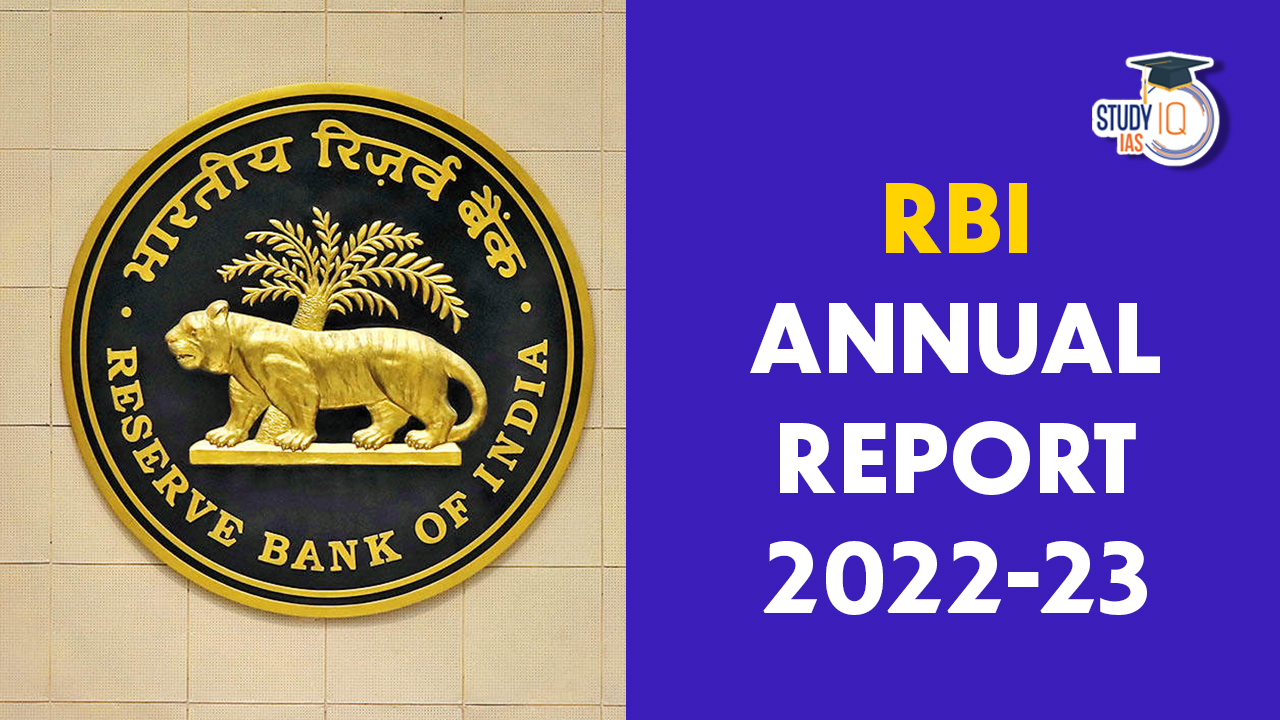Table of Contents
Context: The Reserve Bank of India (RBI) released its annual report for 2022-23, where it shed light on different aspects of the Indian economy, ranging from GDP growth to inflation.
Key takeaways from the RBI’s Report
| GDP Growth Forecast |
|
| Moderate Inflation Risks |
|
| Consumer Confidence Growth |
|
| Monsoon and El Nino Factor |
|
| Capex and Private Investment |
|
| Resilient Banking Sector |
|
About the Reserve Bank of India
- The Reserve Bank of India was established on April 1, 1935, in accordance with the provisions of the Reserve Bank of India Act, 1934 based on the recommendation of Hilton Young Commission Report (1926) with a share capital of Rs. 5 crores.
- The Central Office of the Reserve Bank was initially established in Kolkata but was permanently moved to Mumbai in 1937. The Central Office is where the Governor sits and where policies are formulated.
- Though originally privately owned, since its nationalization in 1949, the Reserve Bank is fully owned by the Government of India.
Central Board of the RBI
- The Reserve Bank’s affairs are governed by a central board of directors.
- The board is appointed by the Government of India in keeping with the Reserve Bank of India Act.
- Term: The directors are appointed/nominated for a period of four years.
- Constitution:
- Official Directors:
- Full-time: Governor and not more than four Deputy Governors.
- Non-Official Directors:
- Nominated by Government: ten Directors from various fields and two government Official.
- Others: four Directors – one each from four local boards.
- Official Directors:
Main Functions of the RBI
- Monetary Authority:
- Formulates, implements and monitors the monetary policy.
- Objective: maintaining price stability while keeping in mind the objective of growth.
- Regulator and supervisor of the financial system:
- Prescribes broad parameters of banking operations within which the country’s banking and financial system functions.
- Objective: maintain public confidence in the system, protect depositors’ interest and provide cost-effective banking services to the public.
- Manager of Foreign Exchange
- Manages the Foreign Exchange Management Act, 1999.
- Objective: to facilitate external trade and payment and promote orderly development and maintenance of foreign exchange market in India.
- Issuer of currency:
- Issues, exchanges and destroys currency notes as well as puts into circulation coins minted by Government of India.
- Objective: to give the public adequate quantity of supplies of currency notes and coins and in good quality.
- Developmental role
- Performs a wide range of promotional functions to support national objectives.
- Regulator and Supervisor of Payment and Settlement Systems:
- Introduces and upgrades safe and efficient modes of payment systems in the country to meet the requirements of the public at large.
- Objective: maintain public confidence in payment and settlement system.
- Related Functions
- Banker to the Government: performs merchant banking function for the central and the state governments; also acts as their banker.
- Banker to banks: maintains banking accounts of all scheduled banks.
About the Monetary Policy Committee (MPC)
- Origin: Under Section 45ZB of the amended (in 2016) RBI Act, 1934, the central government is empowered to constitute a six-member Monetary Policy Committee (MPC).
- Mandate: Further, Section 45ZB lays down that “the Monetary Policy Committee shall determine the Policy Rate required to achieve the inflation target”.
- The decision of the Monetary Policy Committee shall be binding on the Bank.
- Members: Section 45ZB says the MPC shall consist of 6 members:
- RBI Governor as its ex officio chairperson,
- Deputy Governor in charge of monetary policy,
- An officer of the Bank to be nominated by the Central Board,
- Three persons to be appointed by the central government.
- The MPC must meet at least four times per year. The MPC meeting requires a quorum of four members. Each MPC member has one vote, and in the event of a tie, the Governor has a second or casting vote.


 Serious Fraud Investigation Office (SFIO...
Serious Fraud Investigation Office (SFIO...
 Article 142 of Indian Constitution, Sign...
Article 142 of Indian Constitution, Sign...
 Pakistan-Occupied Kashmir (PoK): History...
Pakistan-Occupied Kashmir (PoK): History...





















